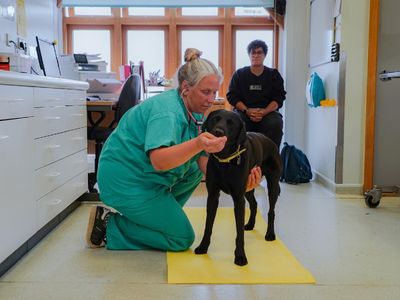
Diet and nutrition for dogs
All dogs need a balanced diet to keep them happy and healthy. Discover our advice to keep them happy and healthy.
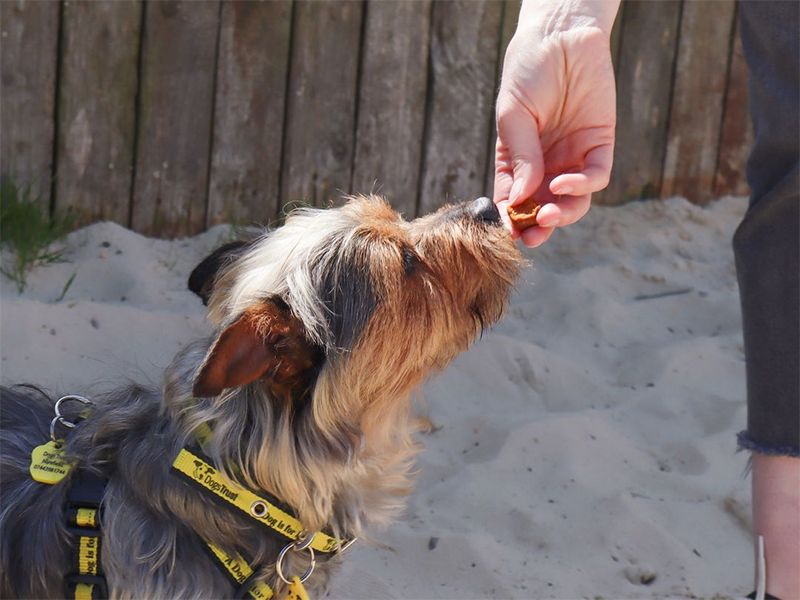
All dogs need a balanced diet to keep them happy and healthy. Every dog is an individual so the perfect diet will depend on their age, size, activity levels, and what they like!
Speak to your vet for help deciding the right diet for your dog. Here’s our advice to get you started.
What type of food should I feed my dog?
There are lots of types of dog food on the market, including complete dry diets, wet food with or without biscuit mixers, and fresh dog food. So it could be difficult to know what is best to feed your dog!
Generally, a good complete food should provide all the essential nutrients for your dog. Dry food can also be good for your dog’s teeth.
It’s difficult to give your dog everything they need with a homemade or raw food diet – so we recommend buying commercial dog food, rather than making your own. If you decide to give your dog this type of food, always seek veterinary advice first.
The food you need will depend on your dog’s life stage
Most foods are now available to suit the different life stages: puppy, adult and senior. These have been formulated carefully to match the needs of dogs at different ages, so make sure you buy the right one for your dog. As your dog gets older, transition to the next food gradually.
Puppies can move on to adult food once they’ve stopped growing – when this is will vary depending on their size and breed. Check the food manufacturer’s guidance and speak to your vet to decide the right timing for your dog.
How to change your dog’s food
It’s important your dog’s diet is consistent, as sudden changes could cause an upset stomach.
If you want or need to introduce a new diet, do this over the course of a few days to a week. Start by replacing a small amount of your dog’s current food with their new food, and gradually increase the proportion of new food.
How much should I feed my dog?
Check the food packet for a guide to work out the right amount of food for your dog. But be aware that these are only guidelines, and you may need to adjust according to your dog’s individual needs.
How much food your dog needs will depend on their activity levels and metabolism, so you’ll need to monitor their weight and body condition. Here’s a useful guide to maintaining a healthy body condition.
Be careful not to overfeed your dog. Obesity increases your dog’s risk of arthritis, diabetes and heart disease. If you think your dog may be overweight, your vet will be able to help you with a feeding and exercise plan.
If you're not sure what a healthy weight is for your dog, or how much to feed them, speak to your vet.
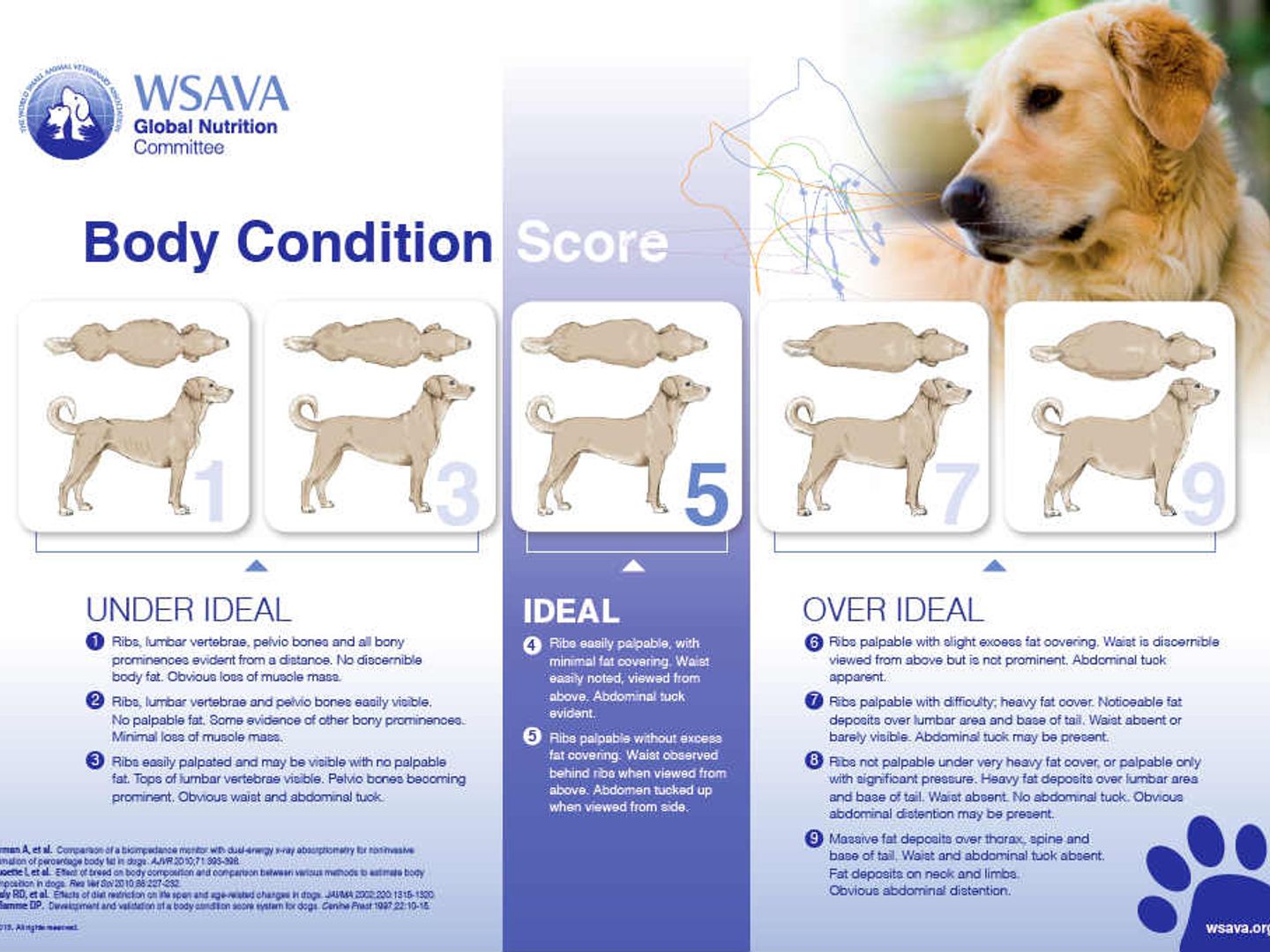

How often should I feed my dog?
The food packet will help you work out the right daily amount, which you should then divide across the number of meals to give your dog.
Puppies should be fed small, frequent meals throughout the day. These can be reduced as your puppy gets older. Here’s a rough guide:
- Under 12 weeks, a puppy would usually have four meals a day
- From about 12 weeks old they will have three meals a day
- From 6 months of age, they can move to two meals a day.
For advice on reducing your puppy’s meals, speak to your vet.
Should I leave food out for my dog?
For most dogs, it is not a good idea to leave food out all day, as it could spoil. Adult dogs should normally be fed twice a day. If you’re concerned your dog is not eating at mealtimes, speak to your vet.
Your dog should always have access to fresh water so always leave their water bowl out. Check and refill it regularly.
Treats
Treats can be used as a great training reward to teach your dog new things. Training with rewards is all about teaching your dog that good things happen when they make a good choice.
When your dog gets a reward, they will associate this with whatever they’ve just done, and they will be more likely to do the same thing again next time.
Here are our top tips for treats:
- Always give your dog treats in moderation. Monitor the number of treats you give your dog and reduce their usual food portions if needed. As a general rule, no more than 10 per cent of your dog’s diet should be made up of treats.
- There are a wide variety of treats you can buy for your dog. Be aware that these can vary in quality and could contain a lot of sugar, milk products and fat, so always check the ingredients.
- Treats that dogs especially love (something soft and smelly like cheese, sausage or chicken) can be used as the ‘gold star’ reward when your dog gets something spot on. You can also use these to keep your dog’s focus and attention in environments where there are more distractions. These can be chopped into small pea-sized pieces for training.
- Your dog can safely eat lots of fruits and vegetables, including carrots, broccoli and strawberries. These can be a good alternative to bought treats as they are lower in calories. Try your dog with a few different options to see what they like, but be careful not to give them anything that could be dangerous – check our list of toxic foods.
- Avoid feeding your dog table scraps as treats. Many human foods can cause digestive upsets and some are even toxic, such as onions and garlic. Human food can also contribute to obesity and unbalance your dog’s diet. Feeding your dog a slice of toast is equivalent to a human eating a portion of chips!
Speak to your vet for more advice on the best way to include treats in your dog’s diet. Most dogs enjoy food as a reward but all dogs are different so they will naturally find different things rewarding. Toys and your attention can also be excellent rewards.
Dangerous and unsuitable foods
Some foods that are safe for humans can be toxic for dogs and could even be fatal. Never give your dog:
- Chocolate
- Caffeine
- Grapes and raisins
- Onions, garlic, leeks, scallions, chives or shallots
- Alcohol
- Macadamia nuts
- Food containing xylitol - an artificial sweetener E967
Related articles

What foods are toxic to dogs and the human foods you can feed them

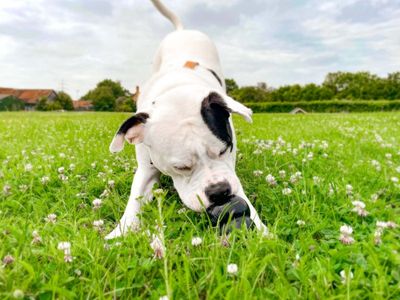
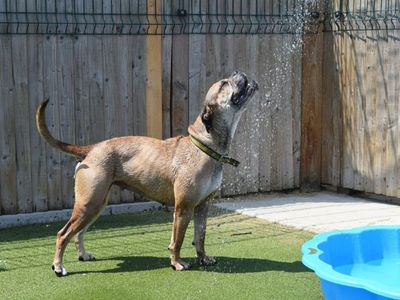

.jpg)